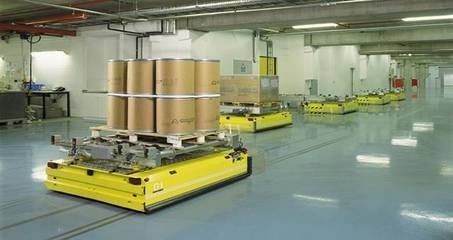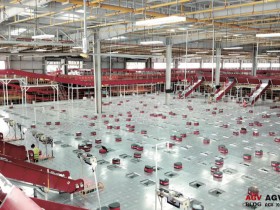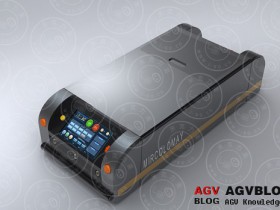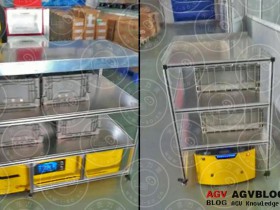1, the driving method is different
In the industrial field application of AGV, taking into account the importance of stability and reliability, AGV is generally driven by servo motor, the motor and the wheel train are integrated structure, the whole imported from Europe, the price is relatively expensive. The AGC only meets the requirements of simple logistics transportation, and generally adopts ordinary DC motor drive (domestic or Japanese import), and the price is low.
2, different positioning accuracy
The AGV positioning accuracy standard is ±10mm, which can meet the requirements of the conveyor on the AGV and the ground conveyor.
The AGC positioning accuracy standard is ±20mm, which cannot guarantee the automatic and precise positioning of the ground conveyor.
3, the speed control method is different
The AGV has different speeds in the straight section and the curved section. The speed of the straight section is 48m/min, and the speed of the curved section is 24m/min, which ensures that the cargo carried by the AGV will not tip over due to the large centrifugal force during the cornering.
The AGC has the same speed in the straight and curved sections. If it is high speed, it will be very dangerous when cornering. If the same speed is low, it is difficult to meet the working beat requirements. In general, the manufacturer installs an angle of steel on the curved section of the AGC running route to forcibly correct the running track of the AGC during cornering, otherwise the AGC will deviate from the running route.

- Different non-contact obstacle detection devices
AGV adopts diffuse reflection laser sensor as the proximity obstacle detection device, which is generally imported, and the effective detection distance is 4m, which has very good detection effect for personnel and equipment. The AGC uses an infrared sensor as a proximity obstacle detection device, because the detection distance of the infrared sensor to different objects is determined by the reflection ability of the object (for example, the reflection ability of the metal object is higher than that of the person), so the calibration distance cannot be guaranteed (2m) ), in order to ensure that there is enough braking distance when obstacles are detected, the AGC runs at a generally low speed. - Interlocking with ground transportation equipment
The national standard "GB/T 20721-2006 General Technical Conditions for Automatically Guided Vehicles", Section 4.3.2, stipulates that "the interlocking function of the installation and the ground transfer device on the automatic guided vehicle. Any accident during the transfer process In case of failure, the other party shall be notified and dealt with in time to prevent damage to the goods or equipment. After the transfer failure occurs, the system shall remain in a stopped state before the fault is removed.
The AGV and the ground conveying equipment are interlocked by infrared radiation switch. When the AGV reaches the transfer position and the interlock is successful, the AGV console communicates with the console of the ground conveying equipment, and the AGV can communicate with the ground. Transfer equipment for transfer. After the transfer is completed, the AGV console communicates with the ground device console again to release the interlock, and the AGV can leave the transfer position to perform the next task.
Because the positioning accuracy of the AGC is not enough, it cannot be automatically transferred with the ground conveying equipment, and there is no interlock function.
6, the console
Article 4.3.3 C) of the national standard GB/T 20721-2006 General Technical Conditions for Automatically Guided Vehicles stipulates that “the dispatching and control functions should be provided between the automatic guided vehicle and the console”.
The AGV adopts a centralized control of the central console. The central console can dynamically display the current status of each AGV in real time. The central console can schedule each AGV separately and can schedule collisions between AGVs.
Although some AGC systems have a central console, they cannot be scheduled separately for each AGC, nor can they be scheduled to avoid collisions between AGCs.
7, the connection with the upper system
As an automatic operation equipment, AGV is essentially a subsystem of the customer's system. Although AGV can operate as an independent system, it must accept the customer's instructions to complete a certain task, and return the task to the customer's system after the work is completed. Finish and accept the next task. That is to say, the AGV must be connected to the customer's system (the upper system for the AGV system) to exchange data.
The AGC is not able to connect to the upper system (all AGC examples can prove this), which is the most critical difference between AGV and AGC.

![[Depth] The rise of Chinese warehousing robot companies](http://www.agvblog.com/wp-content/themes/begin/thumbnail.php?src=http://www.agvblog.com/wp-content/uploads/2020/09/20200904102907-f2f5e.jpeg&w=280&h=210&a=&zc=1)


